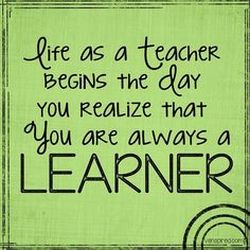 "...the single most significant indicator of student success is an excellent teacher." -Margaret Reagan Educator Margaret Reagan's Six Steps to Master Teaching: Becoming a Reflective Practitioner focuses on professional development throughout a teachers "entire professional career". She states that "the single most significant indicator of student success is an excellent teacher". She examines 6 areas that will help you become a master teacher.
The most meaningful part of her blog is that you are typically only regulated by yourself. That is you must have the motivation to constantly improve upon your teaching because no one else will force you. It reminds me of my time in the Army. We would always [I mean always] conduct an AAR (After Action Review). There was no rank, nothing off limits and most importantly no feelings. Anyone could comment on whatever it was we just finished doing. It included what we were supposed to accomplish, what was actually accomplished, things we should sustain and things that needed improvement. One phrase that has really motivated me is "be a lifelong learner". I don't remember where I heard it, but I identify with it. I don't know where I picked up my desire to learn (no pun intended), but it is something I crave now. I hope that it never fades.
0 Comments
Middle school has changed so much in the last 25 years! I remember sharing three computers with an entire class. We would gather around and play Oregon trail after we navigated our way through "C" prompt. It really wasn't all that difficult, just new to us. Today students are able to dissect problems in minutes; those same problems would have taken me years to complete. I feel sometimes that I learn as much from them as they learn from me. We have started a new section in which we use Autodesk Inventor. I am fortunate to have years of experience in AutoCAD that would help; or so I thought. I have been out of computer aided drafting for 6 years now, I thought I would be able to jump right in, again I was proven wrong. I feel like the student; asking the teacher or some of the more advanced kids in class how they completed certain steps. Although I am very familiar with AutoDesk products, using a "simpler" version did not seem so simple to me. I am starting to get the hang of it and it is coming back to me awfully quick. I am in sheer amazement at the things students are able to accomplish in general, let alone they are only in 5th and 6th grades. One of the most helpful items that I saw incorporated was the teacher's use of instructional video. He has taught this section for about two years now; recognizing common sticking points. Instead of having students get "stuck" and waiting for help he just sends them a link to his video tutorial. It does two things: allows him to focus on keeping students on pace, and forces the students to problem solve before asking for help. Kinesthethic Learning -A learning style in which learning takes place by the students carrying out physical activities, rather than listening to a lecture or watching demonstrations. Also know as active learning. I can not speak for everyone, but I learn best hands on. I found through my experiences in the military, that I need to be shown as well as understand the material. A 2014 study in STEM education examined how technical items were learned best by students interacting with their peers. "As a whole, when trying to enable better student motivation and learning results, enough space must be given for students' contributions." (Rissanen 2014). My most vivid memory of active learning in the military was earning, then teaching and grading for the Expert Infantryman Badge (EIB). EIB is were Infantry soldiers must complete 34 tasks in three days, most of which are highly technical and require precision (no more than two mistakes through all 34 tasks). EIB candidates will spend multiple hours perfecting these tasks using active learning; cadre and peers readily provide tips and strategies to employ. This task would be nearly impossible without the active learning method.. WATCH one example of the 34 tasks below! Correlating my military experience to the classroom may seem like a stretch, however when you teach, coach, mentor and train over 1,000 soldiers in a two week period, you see first hand how individuals learn. The statistics will of course not back up my rant, since the attrition rate is typically somewhere near 93%. In my mind I think 7% passing rate is somewhat high, it is that tough. A 2015 study of a biology class found that we need to "...move to a reduced lecture and increased interactive tutorial/workshop and practical approach to promote student learning and development" (Downs & Wilson 2015). References
Downs, C. T., & Wilson, A. (2015). Shifting to active learning: Assessment of a first-year biology course in South Africa. International Journal of Teaching and Learning in Higher Education, 27(2), 261-274. Rissanen, A. J. (2014). Active and peer learning in STEM education strategy. Science Education International, 25(1), 1-7. I first was introduced to backwards design in the military or as the U.S. Army calls it 'backwards planning'. The best feature, in my opinion, is that you are constantly evaluating your plan (lesson) against your desired end state (goals or standards). It really reduces any redundancy in the planning process and allows to focus on what is important. The acronym A.S.S.U.R.E. is a great tool to use. As a teacher the two biggest questions you must ask are what do your students already know (analyze) and what do you want them to know (objectives or goals)? Once you have identified those it should be fairly easy to draft a general lesson. Sure every student will respond differently, that is why the last four steps are just as important. Evaluate and revise is the step that I see being the most neglected. The importance of reflecting back and deciding what worked and what didn't is essential in everything that we do. Don't just evaluate the students, evaluate your teaching, your lesson plan, what can you do to adapt your lesson or class to make it better. Backwards design is very important; it puts the student first. Students are dynamic; our lessons should follow. There is no comparison, the chalk board looses and here is why. Does every classroom need a whiteboard? I do think that every teacher should incorporate Interactive White Board [IWB] activities into their lesson planning, however it may not be necessary or financially feasible to have them in every classroom. I plan on doing the majority of my teaching in labs using Kinesthetic [hands-on] learning. The IWB will definitely be incorporated into my class in two different ways. 1. Peer lead, by encouraging students to use during
I understand the importance of utilizing multiple methods to reach students, it took me until I was 32 years old and in the U.S. Army Advanced Airborne School [AAS] before I figured out how I learn best. All because I never had the exposure to different teaching and learning styles. Although not all students have the same learning preference depending on pedagogical style. ISTE standards and documented research have displayed interactive white boards increase learning (NEA, n.d). The NEA also states that "multisensory, hands-on learning is the best way to engage" students. The NEA states that...Classroom applications for using interactive whiteboards include:
I will leave you with a quote and a couple links to resources. "It is the context in which IWBs are integrated into the classroom that could have the greatest effect"-DiGregorio, Sobel-Lojeski, 2010. Click on the video below to open a great resource for IWB activities or click me to visit my favorite SMART exchange resource. References DiGregorio, P., & Sobel-Lojeski, K. (2010). The effects of interactive whiteboards (IWBs) on student performance and learning: A literature review. Journal of Educational Technology Systems, 38(3), 255-312. Miller, D., Glover, D., & Averis, D. (2004). Panacea or prop: The role of the interactive whiteboard in improving teaching effectiveness. Paper presented at the Tenth International Congress of Mathematics Education, Copenhagen, July. Available online at: http://www.icme-organisers.dk/tsg15/Glover_et_al.pdf (accessed February 12, 2009). National Education Association(NEA n.d.). Interactive Whiteboards Enhance Classroom Instruction and Learning Retrieved 2016, September 18 from https://www.neamb.com/professional-resources/benefits-of-interactive-whiteboards.htm Current students excel faster and are more engaged in communication than I ever was as. Their ability to adapt is unbelievable, as a teacher I must constantly adapt or I will be left behind, or worse, loose touch with my students. How do I keep up? The method of communication says a lot about our character. Often times email is preferred method of all formal correspondence. Do students check email outside of school? I would assume not many. Is it ever acceptable to send a text message or post to twitter to reach a parent or a student? I think so, maybe you need to get a message out, or you need to remind parents of conferences. There are many ways to communicate and involve both students and parents. While I was in the military I learned to love text messages. In the beginning my soldiers were in constantly sending me text messages, at all hours day or night, it was irritating! It took me a while, but I realized they just needed reassurance or needed to be reminded of timelines and tasks. I came up with two conclusions; either I was not providing the information clearly through verbal means, or there was some forgetfulness. It was most likely a combination of both. This problem was easily solved through technology. I could send text messages to my soldiers pro-actively which allowed me to effectively and efficiently relay information. One advantage was they could refer back to that message at any time to review the content. This eliminated long conversation or explanation and held both my soldiers and myself accountable for dissemination of information. How does this relate to teaching? As teachers we have access to technology that many of our students or their families have access to. They may not have ready access to the internet, computer or cell phone. As teachers we must constantly be aware of how we present communication to ensure we are inclusive. A best practice would be for the student and parent to both fill out a form that suggests their preferred form of communication outside of the classroom. An idea would be to have many options such as Facebook, Twitter, text messaging, phone call or mail. Of course you should check with your school policy before incorporating any of these ideas. The point is that I should not use the method of communication that I am most comfortable with (which I believe is what traditionally has occurred), rather the use the method that suits the student best. I plan on communication with students by adapting to the method that they will respond to most consistently. I will have to adapt to the current trends and technologies. A study was conducted using twitter to "encourage students to engage in convergent communication inside and outside of the classroom" (Parcha, 2014). The study was reinforcing the Communication accommodation theory (CAT) that students learn more when they interact (Giles, Mulac, Bradac, & Johnson, 1987). Each student may or may not know how they learn best, so I will provide information in a medium in which they are familiar. References
Gallois, C., Ogay, T., & Giles, H. (2005). Communication accommodation theory: A look back and a look ahead. In W. Gudykunst (Ed.), Theorizing about intercultural communication (pp. 121–148). Thousand Oaks, CA: Sage Keefe, Mike (2009, March 27). Evolution of Communication. The Denver Post. Retrieved 2016, September 13 from http://www.denverpost.com/2009/03/26/evolution-of-communication/ Parcha, J. M. (2014). Accommodating twitter: Communication accommodation theory and classroom interactions. Communication Teacher, 28(4), 229-235. According to the National Education Association (NEA)"...interviewed leaders of all kinds to determine which of the 21st century skills were the most important for K-12 education. There was near unanimity that four specific skills were the most important(NEA, 2012). The "four C's" are
The use of "four c's" combined with the International Standards for Technology Education(ISTE) are staples in planning, execution and evaluating ourselves as teachers(ISTE, 2016). Continued collaboration with other content areas is imperative to inspire student learning by providing context, utilizing technology and communication similar to what they will experience with a global digital society. As an educator I should be able to reflect on my teaching(daily) and ask, Have I supported, emphasized or enabled the use of the "four c's"? In my preparation, design, execution and assessment have I inspired creativity, student learning? The most difficult benchmark for me is modeling the digital world. I will strive be a facilitator and enabler. References International Society for Technology in Education (ISTE)., 2016. ISTE Standards for Teachers. Retrieved September 13, 2016 from http://www.iste.org/standards/standards/standards-for-teachers NEA, 2012 An Educator's Guide to the "4 C's"., Teaching Strategies Retrieved September 13, 2016 from http://www.nea.org/tools/52217.htm Hello,
This blog is intended for my course at St. Cloud State University. The intent is to give you insight into my classroom, teaching philosophy and personality. I plan on writing periodically as items peak my interest. This is a public forum, feel free to comment, but it is for the world to see. Please exclude from using names or specific topics that can be related to individuals. This should be a place for freedom of expression and learning. With that out of the way. I decided to pursue a career in education after the experiences I had serving as an Infantry Non-Commissioned Officer in the United States Army's 82nd Airborne Division. It was the most eye opening experience of my life; specifically being a mentor, a leader and sometimes a parental figure to young adults. I experienced a feeling of importance in young adults that I have never felt before; providing purpose, motivation and direction in their lives. Most importantly watching them succeed after they had never given themselves the chance |
AuthorMichael S. current educator and former paratrooper Archives
November 2016
Books in my backpack..
Categories |


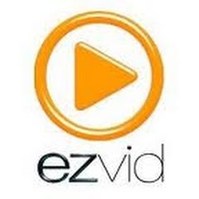


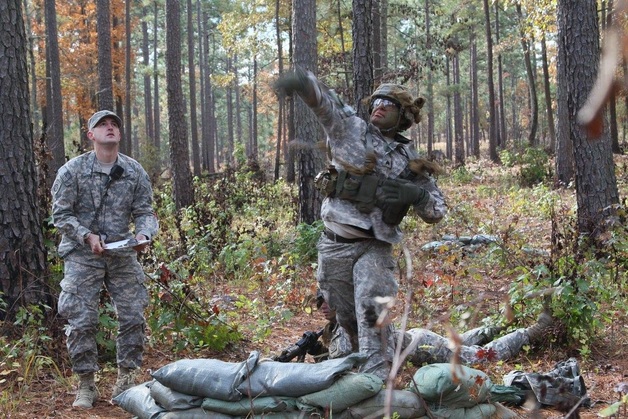
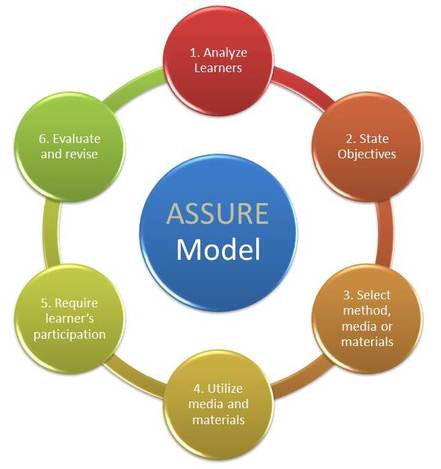
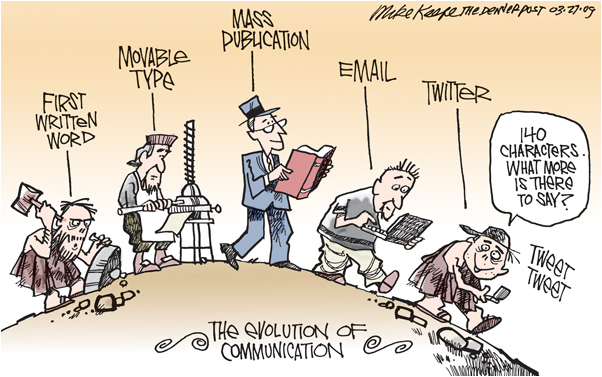



 RSS Feed
RSS Feed
